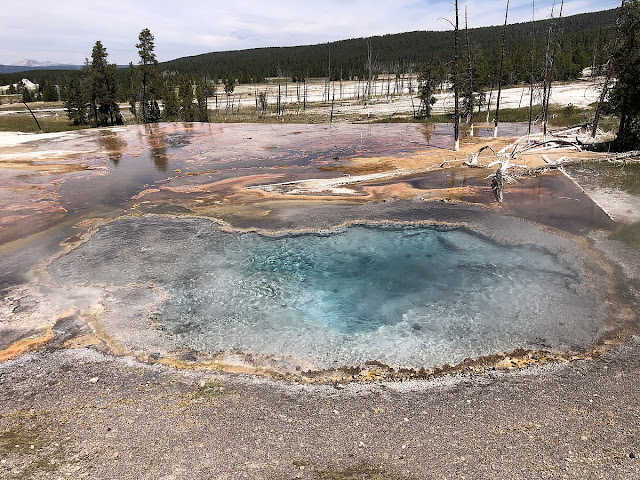Yellowstone National Park Facts and Enchantments
Yellowstone, founded in 1872, is the oldest national park in the United States, and one of the most popular parks in the nation. Spread across the basalt plateau in the northwest corner of Wyoming, a vast wilderness area extends as far as neighboring Idaho and Montana, and forms the heart of the Great Yellowstone Ecosystem, one of the largest and best-preserved climate zone ecosystems on the planet.
Yellowstone Park is known for its spectacular views, diverse flora and fauna, and geothermal wonders. Yellowstone boasts the world's largest number of active geysers, and offers a window into the forces deep beneath the earth's crust, the same forces that make up the park.
The scenery ranges from winding rivers and green valleys, vast lakes, and thundering waterfalls.
Yellowstone is a land of unique and contrasting. Each season paints a different landscape, from the lush greens of spring, and the sparkling summer heat, when herds of bulls and deer graze along the riverbanks.
At any time of year, Yellowstone is a reminder of the amazing wilderness, and abundant wildlife, that once covered much of the planet, and that offers unforgettable safari adventures in the wild American West.
The best way to tour Yellowstone National Park is, by driving around the Grand Loop, a 142-mile long, winding road in a figure eight past the park's most striking natural features.
Well-maintained hiking trails offer stunning views of nature, and many trails are wheelchair friendly. Driving the entire length of both loops can take between four to seven hours, depending on traffic. In the hot summer months, traffic can stop-and-go along the way.
Old Faithful
The geyser known as Old Faithful, because of its regular eruptions, shoots columns of water high into the air. Witnessing this magnificent sight is one of the most popular things you should do in Yellowstone. Although the eruption interval is not quite regular as in the past. They now vary from 35 minutes to 120 minutes, with a mean interval of about 92 minutes.
Old Faithful is not the largest geyser in the park, but it explodes more frequently than any other large geyser in the park.
Lower Geyser Basin
The Lower Geyser Basin offers more hot springs than any other area in the park. The boardwalk takes you to what it's known for: the Fountain Paint Pot, which boils with hot, reddish-colored mud. Slightly south of here on the popular three miles is Firehole Lake Drive (Great Fountain Geyser), a magnificent spectacle every 9-15 hours, when it shoots water 75 to 220 feet into the air. On the lush greens of the Fountain Flats, bulls and deer often graze, especially in the morning and evening.
Midway Geyser Basin & Grand Prismatic Spring
Named the Midway Geyser Basin & Grand Prismatic Spring for its location between the Upper and Lower Geyser Basins, the Midway Geyser Basin has two of the largest geothermal features in Yellowstone. The crater of the Excelsior Geyser throws 55 gallons of hot water per second into the Firehole River. Nearby is a beautiful view of the 370-foot Great Prismatic Spring, one of Yellowstone's best and largest hot springs.
Norris Geyser Basin
The Norris Geyser Basin is reputed to be the oldest, hottest and most hydrothermally active geyser in Yellowstone. The basin includes two main areas that are open to visitors, and are accessible via a circular path: The Porcelain Basin is like a gloomy, treeless moon, immersed in the pungent aroma of bubbling geysers, which surround a three-quarter mile trail.
Hayden Valley
Often dotted with great herds of bison, the scenic Hayden Valley is a prime spot for wildlife viewing. In the spring and early summer, grizzly bears often roam here looking for bison and newborn deer. Coyotes are also easily found in green pastures. Birders will also have lots of things to see. Bald eagles, northern grasshoppers, sand storks, shorebirds, ducks, geese, and pelicans are some of the species that inhabit areas around mudflats and rivers.
Best Time To Visit Yellowstone
The best months for visiting Yellowstone are April, September and October. These “off-season” months give you more opportunities to see the local wildlife, and are less crowded. Bears emerge from hibernation between March and April, migratory birds arrive just before May, and moose activity begins mid-September.





No comments:
Post a Comment